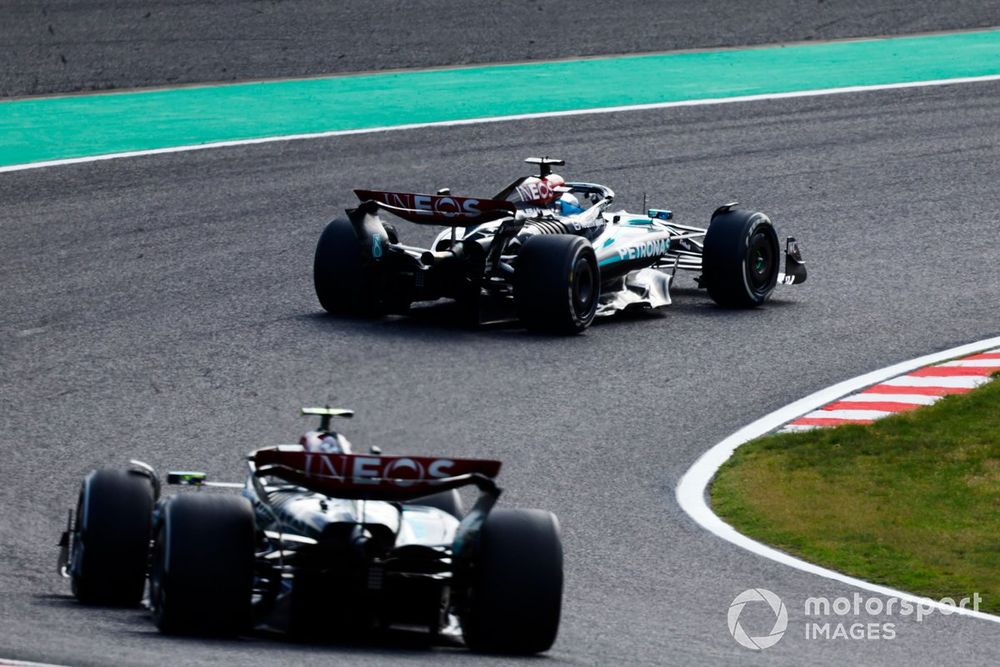As part of the effort to increase car performance to help accommodate the characteristics of the new turbo hybrid engines that feature a 50/50 power split between the internal combustion engine and battery, the new cars are going to have moveable aero.
The idea is that the car’s wings will be able to run in a high-downforce configuration in corners to help deliver grip, before shifting to a low drag configuration on the straights to help boost straightline speed.
One path being explored was for only the rear wing to be moveable, as it could then work easily in conjunction with DRS and would be the least complicated solution.
However, with some teams having recently been evaluating what is known as the baseline ‘Fangio’ car model in simulators to try to understand how this would work, some concerning characteristics emerged.
According to sources, when the rear wing was in its most low-drag configuration and the engine was at full power, the car was almost undriveable – with multiple examples of drivers spinning on straights under acceleration or being unable to take the smallest of curves without the rear stepping out.
This was triggered by a shift in aero balance that was estimated to be three times as much as is currently experienced when DRS is open.
One insider even suggested that the only way to prevent the cars spinning was to drive so conservatively that the lap times ended up being slower than current Formula 2 machinery.
It is understood that FIA representatives visited team facilities recently to get a better understanding of what is going on and what can be learned from the simulator findings.
And FIA sources have revealed that the conclusion has been reached that the moveable aero plan will not work with only the rear wing changing configuration.
Instead, the FIA has decided that the 2026 aero plan will need to incorporate both the front and rear wing moving in conjunction with each other if the cars are going to deliver the performance characteristics hoped for.
By ensuring that the two wings work together, it should help reduce the aero balance offset that has been causing trouble in the simulator.
As efforts continue to frame the aerodynamic regulations before the end of June, Red Bull team principal Christian Horner said he welcomed the FIA listening to team concerns about what they were finding out.
He famously warned last year that there was a risk of F1 being left with ‘Frankenstein…
Click Here to Read the Full Original Article at Motorsport.com – Formula 1 – Stories…

